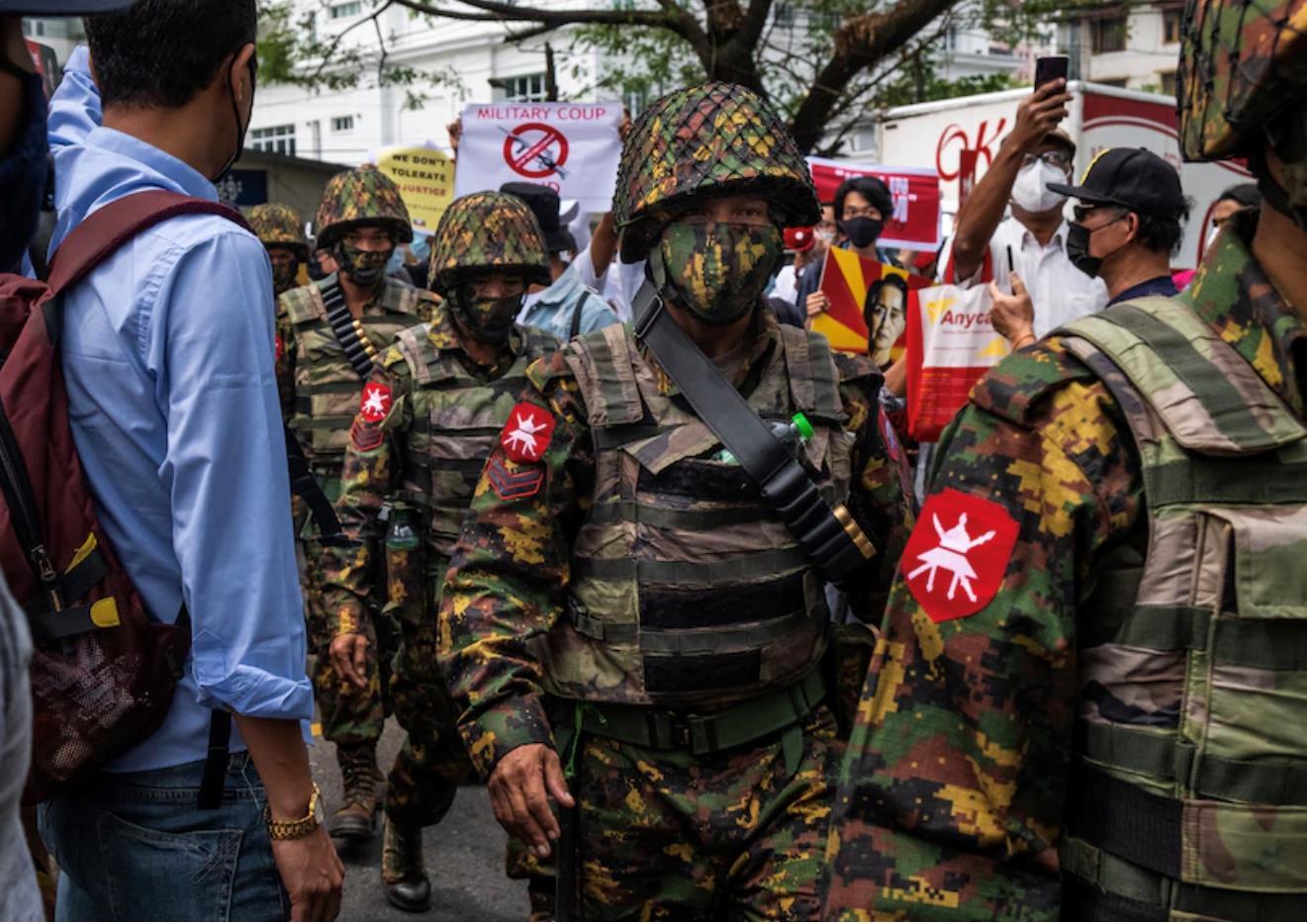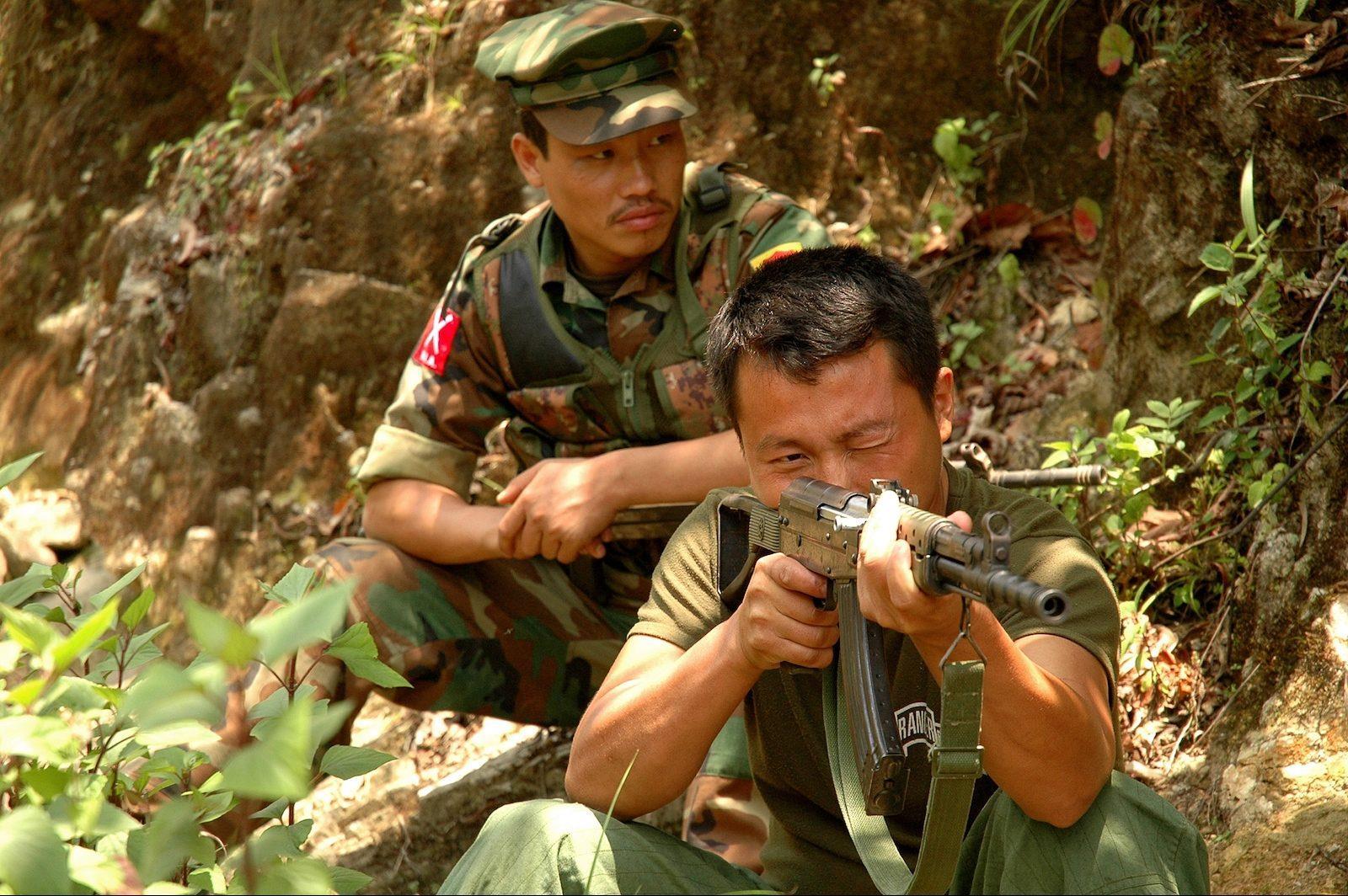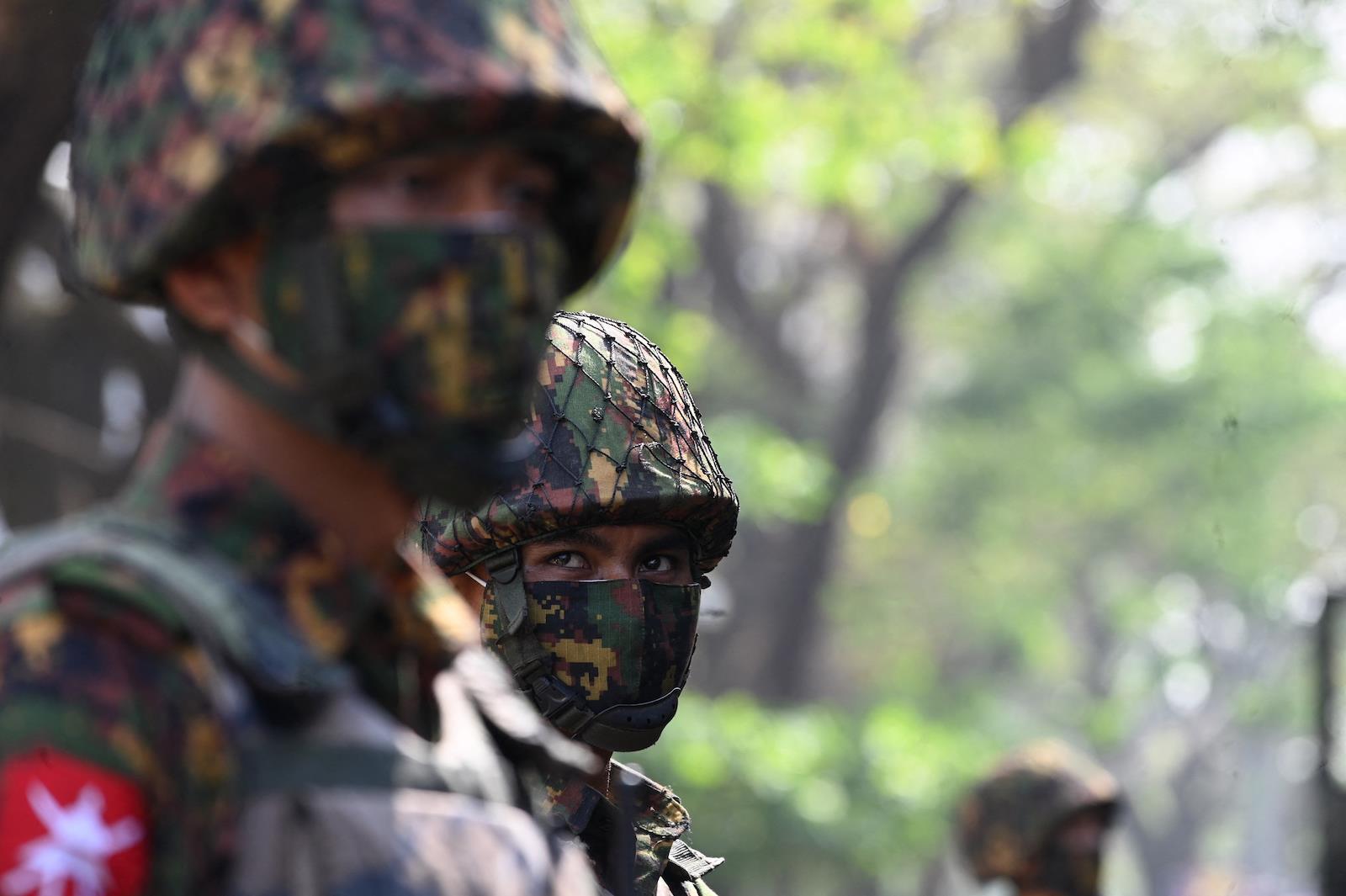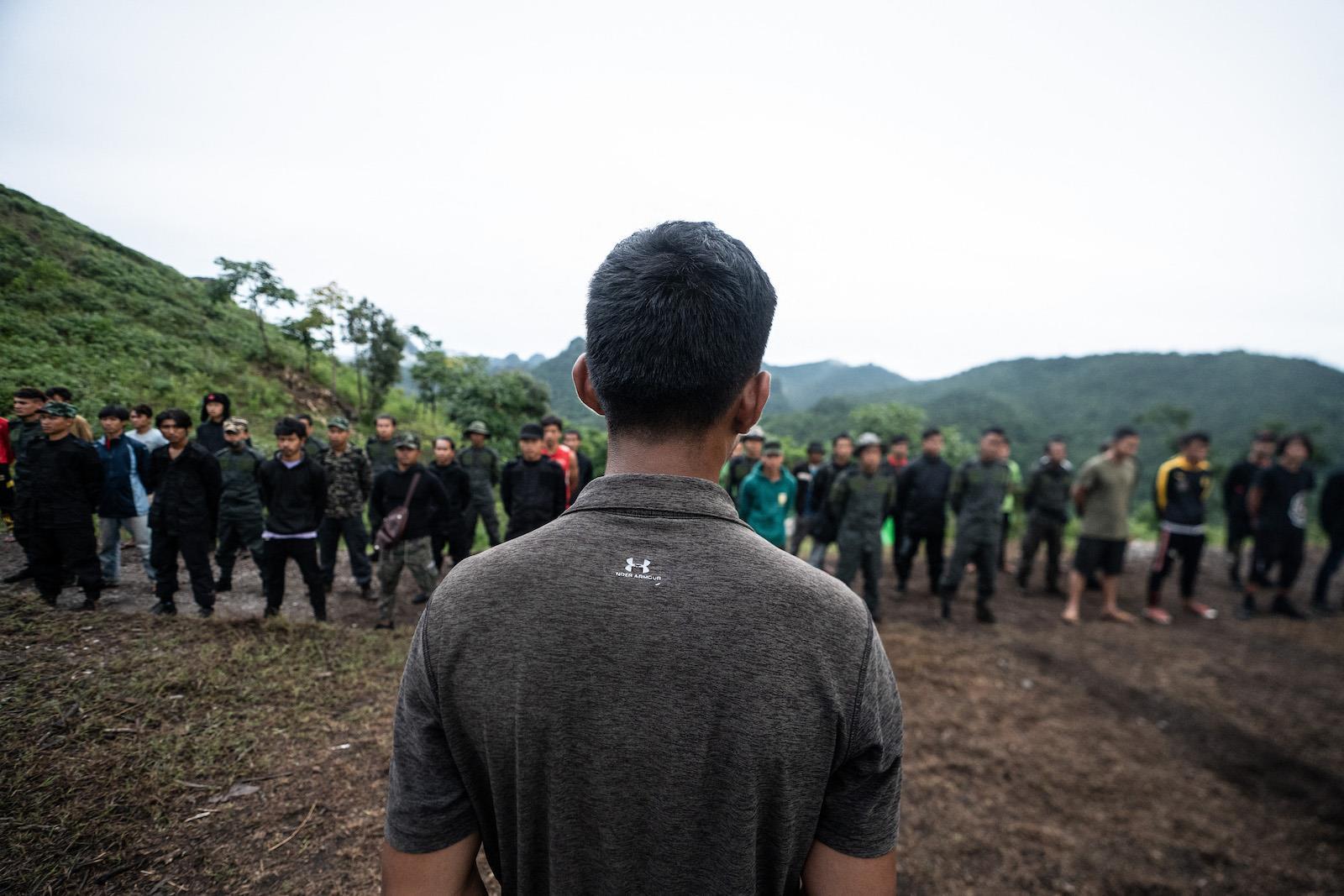(MENAFN- Asia Times) Myanmar army Lieutenant Colonel Zaw Zaw Soe, 48, was killed near the town of Mindat in late July along with several of his men, prompting the publication of a rare death notice for a senior officer in the state-controlled Kyemon (Mirror) newspaper.
Felled by Chinland Defense Force (CDF) fighters, one of an estimated 150 recently raised People's Defense Forces (PDFs) opposed to the military's coup, the killings added to a lengthening list of conflict casualties that shows security forces taking a pummeling at the hands of multiple protagonists.
On August 30, at least 40 soldiers were reputedly killed when a military convoy ran into a booby-trap set by a local PDF group in Kawlin, Sagaing Region, according to a PDF member quoted in media reports.
That followed the killing of 17 army soldiers in a clash in Sagaing's Tamu town on August 23, according to PDF sources quoted in Myanmar media. Other reports indicated 30 infantry troops were killed in Gangaw in Magwe Region in one day in late August.
These army, or Tatmadaw, casualties in rural towns are all being recorded in areas that were not associated with armed conflict prior to the military's February 1 coup and the formation of its State Administration Council (SAC) junta.
At the same time, there is intensifying fighting in long-standing conflict zones in Kachin, Shan, Kayin and Kayah states. The world's oldest continual insurgent force, the Karen National Liberation Army (KNLA), reported it had killed 284 soldiers and wounded 297 in just May and June.
In Hpapun, home to the KNLA's Brigade 5 and where conflict persisted in previous years despite the insurgent outfit's signing of a nationwide ceasefire agreement in 2015, 50 Tatmadaw soldiers were killed in August and 65 in July.
The opposition National Unity Government (NUG), formed as a shadow administration in the wake of the coup and labeled by the SAC as a“terrorist” organization, claimed recently that the tally of Tatmadaw casualties in clashes nationwide was 1,130 dead and 443 wounded between June and July, with 740 dead in July alone.

Myanmar soldiers on the march amid an anti-coup protest. Image: Getty via AFP / Hkun Lat
The prospects of escalating urban warfare must concern the Tatmadaw, which reports often estimate as large as 500,000 soldiers in uniform, the largest in Southeast Asia. Its actual size, though, must be significantly smaller, as average frontline unit numbers are a fraction of optimal size, and are stretched along multiple battlefronts.
On August 30, seven bomb explosions were reported in the commercial capital of Yangon, marking the latest in a series of shadowy bombings that have targeted mostly military soft targets. Hit-and-run assassinations of junta officials and their suspected paid informants are also on the rise.
Those attacks have the junta grasping at shadows. State media reported authorities have arrested 41 alleged members of PDFs in Yangon alone, many of them reputedly trained in territory controlled by ethnic armed organizations (EAOs) in recent months.
As many of the PDFs, acting independently, interdependently, or in tandem with EAOs become operational across the nation, the Tatmadaw's casualty rate seems set to rise.
But will the growing death toll affect Tatmadaw cohesion? Previous conflicts have seen the Tatmadaw absorb crushing casualties that would debilitate most militaries, or necessitate a dramatic change of tactics and approaches to pacification.
Recent fighting in Rakhine state against the upstart Arakan Army (AA) has likely resulted in some 2,000 casualties for the Tatmadaw, if the AA's figures are remotely accurate.
Close observation of the conflict and reports of various clashes in the state from mid-2018 to the end of 2020, when a verbal ceasefire was agreed and has since largely held, validate the AA's killing claims.
During the war in Kachin state between 2011 and 2013, the Kachin Independence Army (KIA) likely killed several thousand soldiers, often in repelling Tatmadaw human wave assaults on KIA hilltop positions.
The Kachin published scattered reports of conflict casualty data but refrained from crowing about the high number of deaths, seeing it as counterproductive.

Rebel soldiers of the Kachin Independence Army (KIA) manning rifles on a supply route from Laiza, a KIA-controlled stronghold in Myanmar's northern Kachin state on the border with China. Photo: AFP / Patrick Bodenham
In January 2013, in his office in Naypyidaw, U Aung Min, a former general and minister in then-president Thein Sein's government told this analyst that the KIA had inflicted 200 dead during the Tatmadaw's attempts to relieve a surrounded outpost near the China border, in just two days of fighting.
Tatmadaw casualties in fighting the Myanmar National Democratic Army (MNDAA) ethnic Kokang rebels in both 2009 and 2015 resulted in heavy Tatmadaw casualties, evidenced in the creation of a special“widows housing project” in Lashio in 2016 and a special graveyard outside of the town with hundreds of white crosses.
The Tatmadaw's casualty threshold is thus obviously high. But how many conflict-related casualties has Myanmar endured in over the past 70 years of low and high-intensity civil war?
The real number, of course, will never be known, even if the Tatmadaw keeps exacting records. Attrition rates to land mines, sniping, malaria, accidents and desertions are impossible to calculate.
One certainty is that the punishment was never enough to compel mutiny, large-scale desertions, or a significant shift in operational doctrine.
Tatmadaw counterinsurgency has long been predicated on pushing forward regardless of death rates and privations. Frustrations are often taken out on civilians, as seen in recent looting and worse by soldiers in areas where PDFs are active.
And“fragging”, or murder among the ranks of soldiers including against unit leaders, is certainly a phenomenon within the Tatmadaw, but not enough to significantly cripple cohesion.
The nature of Myanmar's conflicts was left largely unexamined by Western development actors since 2011, as was any probing of the true character of the Tatmadaw – a fatal oversight as few foresaw the potential for its disastrous coup.
Instead, privilege was given to the peace process, development projects, military engagement, peacekeeping trainings and the energetic sophistry of security-sector reform research, which all looked away from the military's actual performance in practice, not theory.

Soldiers are pictured outside the Central Bank of Myanmar as people gathered to protest against the military coup, in Yangon on February 15, 2021. Photo: AFP / Sai Aung Main
Research outfits such as EXERA, ACLED (Armed Conflict Location and Event Data Project), and the pro-Tatmadaw Myanmar Institute for Peace and Security (MIPS) emerged to analyze dynamics of armed conflict and produce data rich with conflict reportage.
Much of this reporting is limited by its reliance on mostly local news reports: an uncertain metric, and often based on either unreliable or misleading EAO statistics.
The news media are also limited by geographic access, lack of confirmation options, the challenges of transliteration from Burmese and ethnic languages and the highly uneven quality of open-source intelligence.
The Assistance Association of Political Prisoners, a rights group, claims the junta had killed 1,026 since the coup, a figure that is probably better vetted than most on the post-coup conflict but could still be either exaggerated or understated.
Assessing conflict data in Myanmar is predicated on the number of clashes and body counts, both of them imperfect metrics to understand the nature of armed conflicts, especially without placing patterns of conflict into longer time frames to assess volatility, local conditions and seasonal variations.
Similar limitations are evident in large conflict data sets used by academics to analyze the wars. The Uppsala Conflict Data Program (UCDP) tallies 20,442 overall deaths in conflict in Myanmar between 1989 to 2020, including state-based violence, non-state based violence and one-sided violence.
Another map puts the figure at 24,072. Yet the UCDP fails to include the AA and other armed groups, nor does it distinguish between combatants and civilians.
Similar limitations are evident in other databases such as the Correlates of War database. This is not to critique econometric analysis of conflict, but rather to underscore the limitations of almost all data that comes out of modern Myanmar.
Too often these data sources served to soothe concerns over the intensity of conflicts, and aimed to assure Western donors that peace was breaking out despite the fact many ethnic conflicts were as kinetic as they had been in decades.
An obverse false post-coup positive is that high casualty rates will eventually lead to the Tatmadaw's collapse. Speculation of an imminent split in the Tatmadaw's ranks and increased defections to resistance forces have been growing since February.
NUG Defense Minister Yee Mon issued a directive on August 28 that called on the Tatmadaw and police to defect to the resistance, refuse to obey the SAC's orders, refrain from obstructing PDF activities, and stop killing and torturing civilians or looting property.

This photo taken on July 7, 2021 shows members of the Karenni People Defense Force (KPDF) taking part in military training at their camp near Demoso in Kayah state. Photo: AFP / Stringer
Ominously, the directive concludes with a warning:“the PDF and its allied forces will take strong actions against the terrorizing henchmen of SAC who are acting treacherously against the country and its people.”
But the NUG fails to acknowledge that many soldiers may despise their senior commanders and oppose the coup, but will not defect out of fear of reprisals against themselves or their families.
Some young resistance fighters are looking more towards the AA than NUG for inspiration. The AA rose rapidly from obscurity to wrest a near-monopoly on organized violence in Rakhine state in just several years through methodical organization, discipline, strong social ties in a largely homogenous central part of the state and through extreme and ruthless violence.
The AA's ceasefire with the Tatmadaw has held throughout the post-coup nationwide uprising, giving the insurgent group the space to expand their authority and control in several townships while state forces are distracted elsewhere.
The eminent American strategist Thomas Schelling observed,“the power to hurt is bargaining power.” Killing more of your adversary may achieve political goals if they capitulate or compromise, the theory goes.
But when your enemy has made it clear over years it doesn't care about casualties, campaigns of killing won't readily achieve the PDFs' political objectives and will likely only deepen the Tatmadaw's institutionalized bunker mentality.
David Scott Mathieson is an independent analyst working on conflict, peace and human rights issues on Myanmar
MENAFN31082021000159011032ID1102713813